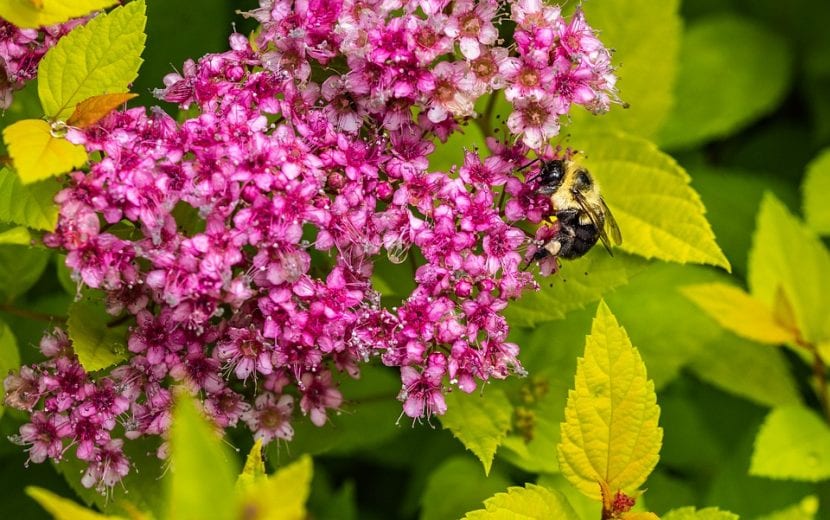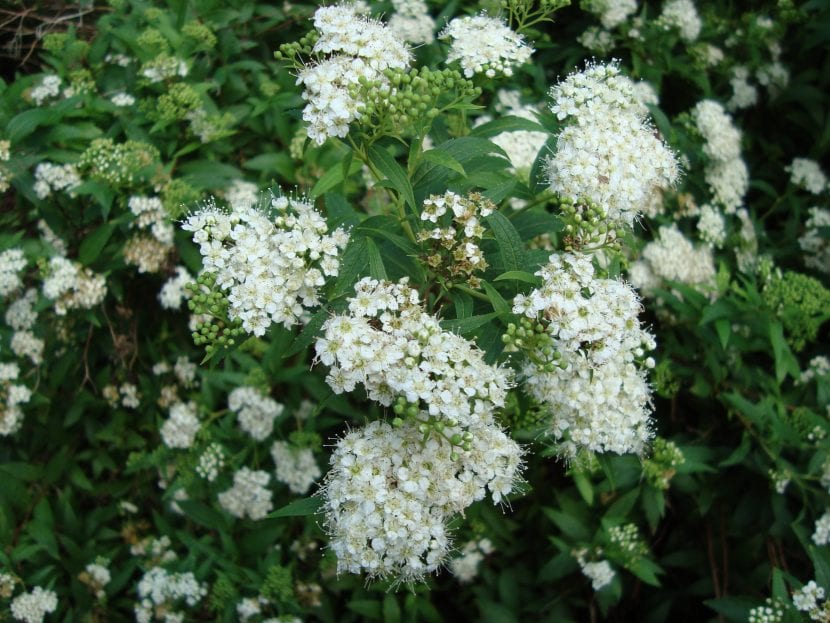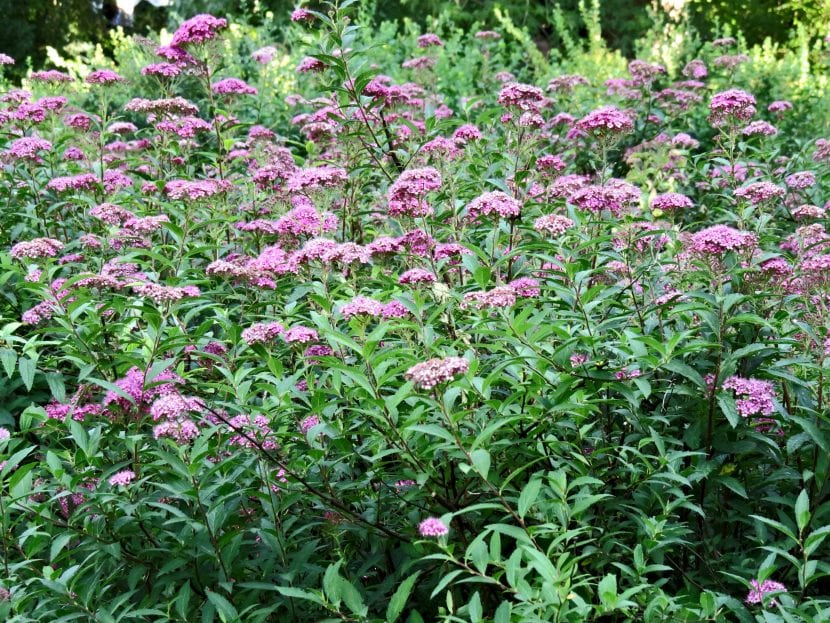
If you need a deciduous shrub that produces lots of pink or white flowers and is easy to care for, you will find few like it. Spiraea japonica. Not only is it beautiful, but it also resists intense frosts, so it can be had in temperate climates without problems.
It has a growth rate that is neither very fast nor very slow, but if necessary it can be pruned to control its development in autumn. Get to know it thoroughly.
Origin and characteristics

Image - Wikimedia / Epibase
In this deciduous shrub that reaches a height of between 1,2 and 2 meters and a diameter of approximately the same. Its leaves are alternate, 2,5 to 7,5 cm long, have a lanceolate ovate shape and are simple, with serrated margins. The flowers are grouped in terminal racemes, and can be pink or white. The fruit is a glossy capsule that contains seeds of about 2,5mm.
His scientific name is Spiraea japonica, although it is known as spirea of Japan. It grows naturally in Japan, Korea and China, countries where it is considered a native species. We can also see it in the northwest, southeast and midwest of the US and in parts of Canada, but in these places it was introduced.
What are their cares?

If you want to have a copy, we recommend you take care of it as follows:
- Location: outdoors, in full sun or in semi-shade.
- Earth:
- Garden: tolerates a wide variety of soils, but prefers those that are acidic, well-drained, and cool.
- Pot: substrate for acidic plants, or mix 70% akadama with 30% kiryuzuna.
- Irrigation: frequent, especially in summer. Water 4-5 times a week during the hottest season, and every 3 or 4 days the rest. Use rainwater or lime-free.
- Subscriber: from the beginning of spring to the end of summer, with a specific fertilizer for acid plants following the indications specified on the package.
- Multiplication: by seeds and cuttings in spring.
- Pruning: in autumn. Remove dead, diseased, or weak branches, and trim those that are growing too much.
- Rusticity: it resists frosts down to -15ºC.
Enjoy your plant 🙂.